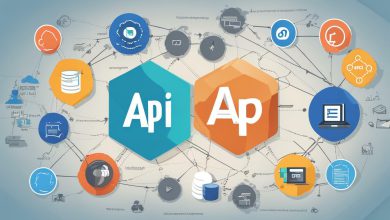
Agile methodology has become increasingly popular in recent years due to its ability to adapt to changing environments and meet customer demands efficiently. Understanding the Agile Manifesto and its core principles is essential for effective implementation of Agile development practices.
Agile methodology is a flexible approach to software development that emphasizes iterative development, customer collaboration, and adaptive planning. It enables teams to deliver high-quality software products in a timely and efficient manner, ensuring customer satisfaction.
Key Takeaways:
- The Agile Manifesto is a set of principles for flexible development that emphasizes customer collaboration and adaptive planning.
- Understanding Agile methodology is crucial for efficient and effective software development.
- Agile practices like Scrum, Kanban, and Lean promote team collaboration and iterative development.
Key Values and Principles of the Agile Manifesto
The Agile Manifesto sets out four core values and twelve underlying principles that guide flexible development. These values and principles prioritize:
- Individuals and interactions over processes and tools
- Working software over comprehensive documentation
- Customer collaboration over contract negotiation
- Responding to change over following a plan
These values and principles emphasize the importance of continuous collaboration and feedback between team members and with customers, enabling teams to quickly adapt to changing needs.
Iterative Development
One of the key principles of the Agile Manifesto is iterative development. This means that instead of working on a project in a linear fashion, teams break it down into smaller, manageable chunks. These chunks, known as iterations or sprints, allow for regular testing and feedback, ensuring that the final product meets the needs of the customer.
Iterative development also emphasizes the importance of continuous improvement and learning throughout the development process, allowing teams to make adjustments and adapt to changes as they go.
Team Collaboration
Another core value of the Agile Manifesto is team collaboration. Agile teams work closely together, emphasizing communication and cooperation to achieve shared goals. This helps to foster a sense of ownership and accountability, enabling teams to work together more efficiently and effectively.
By valuing teamwork over individual achievements, Agile methodologies create an environment that encourages sharing knowledge, skills, and expertise, improving the overall quality of the final product.
Customer Satisfaction
Finally, the Agile Manifesto prioritizes customer satisfaction, focusing on delivering a product that meets the customer’s needs. Agile methodologies achieve this through continuous collaboration and feedback with clients and stakeholders, ensuring that their needs are met and their feedback is incorporated throughout the development process.
By prioritizing customer satisfaction, teams are able to deliver high-quality products that meet the needs of their intended audience, leading to improved customer loyalty and higher levels of success.
Implementing Agile: Agile Methodology and Practices
Implementing Agile methodology effectively requires a collaborative team effort that emphasizes flexible development. Agile methodology is based on the principles of iterative planning and feedback, team collaboration, and customer satisfaction. The process involves breaking work down into smaller chunks and prioritizing tasks based on their importance to the project’s overall goals. The following Agile practices have proven to be effective in Agile development:
Scrum
Scrum is a popular Agile methodology that emphasizes teamwork, collaboration, and iterative development. The process involves breaking work down into smaller chunks, called sprints, and prioritizing tasks based on their importance to the project’s overall goals. Scrum encourages daily stand-up meetings, which allow team members to discuss progress and potential roadblocks, ensuring that everyone stays on track and informed. This Agile methodology emphasizes adaptive planning, enabling teams to adjust their plans as they go and ensuring that the final product meets the needs of the customer.
Kanban
Kanban is an Agile methodology that emphasizes team collaboration and transparency. The process involves using a visual board to manage work, allowing team members to see what tasks are in progress, what tasks are blocked, and what tasks have been completed. Kanban encourages continuous improvement, enabling teams to identify areas for improvement and make changes accordingly. This Agile methodology emphasizes the importance of flexible development, allowing teams to adapt their plans based on feedback from customers and stakeholders.
Lean
Lean is an Agile methodology that emphasizes efficiency and waste reduction. The process involves identifying and eliminating any activities that do not add value to the project, streamlining the development process and reducing the risk of delays and budget overruns. Lean emphasizes teamwork and collaboration, enabling teams to work together to identify areas for improvement and make changes accordingly. This Agile methodology emphasizes the importance of customer satisfaction, ensuring that the final product meets the needs of the customer.
Implementing Agile methodology requires a team effort that emphasizes flexibility, collaboration, and customer satisfaction. By breaking work down into smaller chunks, prioritizing tasks based on their importance, and using iterative development practices, teams can streamline their workflow and improve efficiency. Agile methodology empowers teams to adapt their plans as they go, ensuring that the final product meets the needs of the customer.
Benefits of Agile Development
Agile development offers numerous benefits for organizations seeking flexible development solutions. One of the primary advantages of Agile methodology is the focus on adaptive planning, making it easier for teams to accommodate changes during the development process. This results in a more efficient workflow and enables teams to deliver high-quality products without sacrificing quality.
Another advantage of Agile development is the emphasis on team collaboration. By working closely together, team members can share insights and ideas, leading to improved problem-solving and a more streamlined workflow. This approach also helps to reduce the risk of miscommunication and ensures that all team members are aligned with the project’s goals and objectives.
Agile development is particularly useful for organizations that require flexibility and adaptability in response to changing market conditions. This methodology allows teams to prioritize tasks and deliverables based on customer needs, ensuring that the final product is tailored to their requirements. This approach also helps to eliminate the risk of over-engineering and ensures that the project remains focused on its core objectives.
In addition to these advantages, Agile development also promotes a culture of continuous improvement. By incorporating feedback from customers and stakeholders into the development process, teams can continually refine and improve the final product. This approach results in a higher level of customer satisfaction and enhances the reputation of the organization in the marketplace.
In summary, Agile development offers numerous benefits for organizations seeking flexible development solutions. By emphasizing adaptive planning, team collaboration, and continuous improvement, Agile methodology helps to streamline workflow, improve efficiency, and enhance customer satisfaction.
Conclusion
In conclusion, the Agile Manifesto and its core principles are essential for achieving flexible development and customer satisfaction. Understanding Agile methodology and its benefits is crucial for any team seeking to optimize their workflow and adapt swiftly to changes. By emphasizing the importance of iterative development, team collaboration, and customer satisfaction, Agile methodologies enable teams to streamline their processes and achieve efficient and effective development.
Implementing Agile methodology in flexible development requires incorporating different Agile practices such as Scrum, Kanban, and Lean. These practices emphasize team collaboration and iterative processes for optimized workflow and efficient development. By implementing Agile practices, teams can ensure they stay on track and achieve their goals by adapting swiftly to changes.
The benefits of Agile development are numerous, including enhanced workflow efficiency, adaptive planning, and continuous feedback for improved customer satisfaction. Agile methodology provides teams with the tools they need to optimize their workflow while ensuring customer satisfaction through iterative improvements.
In conclusion, understanding the Agile Manifesto and its core principles is critical for achieving flexible development and customer satisfaction. Such understanding will not only ensure teams optimize their workflow but also enable them to remain adaptable and resilient in the face of change.
FAQ
Q: What is the Agile Manifesto?
A: The Agile Manifesto is a set of guiding principles for flexible development. It emphasizes collaboration, iterative development, and customer satisfaction as core values.
Q: Why is it important to understand Agile?
A: Understanding Agile principles is crucial because it enables teams to embrace flexible development practices and adapt to changing requirements more effectively.
Q: What is Agile methodology?
A: Agile methodology is an approach to software development that promotes iterative processes, adaptive planning, and continuous delivery. It focuses on delivering value to customers through collaboration and feedback.
Q: What are some Agile practices?
A: Some common Agile practices include Scrum, Kanban, and Lean. These practices emphasize teamwork, incremental development, and continuous improvement to achieve efficient and effective development.
Q: What are the benefits of Agile development?
A: Agile development offers several benefits, including improved workflow efficiency, faster and more responsive development cycles, increased customer satisfaction through continuous feedback, and the ability to adapt to changing requirements.








